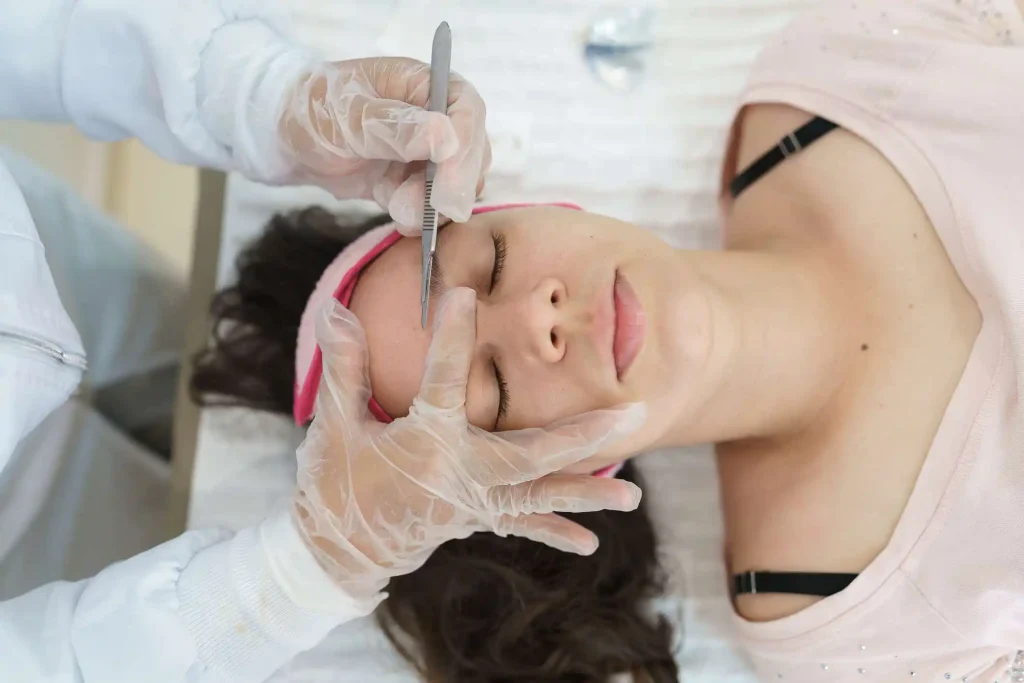Dermaplaning is a mild skincare treatment that removes dead skin and peach fuzz from the face. This treatment leaves your skin looking fresh and feeling smooth following procedures. It also allows for better absorption of your skincare products. Understanding how often you should dermaplane your face for maximum glow and the health of your skin is essential to knowing how to take care of your skin. This guide outlines proper timing and care of your skin.
Understanding How Often to Dermaplane
Dermaplaning removes dead skin cells and peach fuzz from your skin, allowing for a clean, smooth surface. Regular sessions are important to keep your skin fresh, but doing it too often can make your skin sensitive.
It’s best to find a balance so your skin has time to heal between treatments. Your individual skin type and your skin’s own natural rate of renewal will determine how often to dermaplane.

When to Dermaplane Most Skin Types
Most people will achieve the best results if they dermaplane every 3–4 weeks. This will provide your skin enough time to renew and stay smooth. Doing it too often could result in redness or irritation.
A few basic tips would be:
- Wait at least 3 weeks before your next session.
- Allow your skin to fully heal before derma planning.
- If your skin is sore or sensitive, allow more time.
- Gentle aftercare helps keep skin radiant.
Factors That Impact How Frequently You Should Dermaplane Your Skin
All skin is different, so there is not one ideal timeframe for dermaplaning. How often you dermaplane your skin will depend on its needs and how your skin behaves and looks after treatment.
Things like your skin type, current skin concerns, and whether you dermaplane at home or with a professional can all change how often you should do it. Understanding these factors helps you care for your skin safely and keep it glowing.
Skin Type
- Your skin type plays a significant role in how frequently you should dermaplane.
- Oily skin typically collects more build-up and dead skin cells from the surface of your skin, so you can probably dermaplane a bit more frequently. Every 3 weeks would be a good rule of thumb.
- If you have dry or sensitive skin, you will want to be more cautious when dermaplaning. Over-exfoliation can cause redness and flaking of the skin, so you will want to wait around 4-6 weeks in between sessions.
- Combination skin can usually sit somewhere in between. A month is a good timeline, depending on how your skin feels.
- Knowing your skin type will help you stay irritation-free and allow your face to remain soft & healthy!
Skin Concerns
- If you have skin concerns with acne, redness, and uneven texture, you will want to be careful.
- You should avoid dermaplaning when you have active acne or open pimples. You can cause bacteria to spread and make the skin uncomfortable.
- If you have skin redness and/or sensitivity, you should wait until your skin calms down before continuing with another treatment.
- When dermaplaning is done at the right time, it can help with the texture and dullness of your skin and leave your skin looking brighter and smoother! You just have to pay attention to how your skin reacts after each treatment.
Professional vs. At-Home Treatments
- The manner in which you dermaplane also determines how often you should dermaplane.
- Professional dermaplaning is executed by a provider using medical-grade instruments. With this method, more debris and hair are removed, so you should wait approximately 4–6 weeks before your next dermaplaning appointment.
- At-home dermaplaning is considered light or superficial; therefore, in most cases, there is no issue if you dermaplane every 2–3 weeks, depending on your skin’s unique needs.
No matter which method you choose, always use clean tools and gentle skincare afterward. Listening to your skin will help you decide the best schedule for you.

Signs That You Should Dermaplane Again
If the appearance of your skin begins to look dull or feel rough, it might be time to dermaplane again. Dead skin can accumulate on the surface of your skin and contribute to the loss of a glow in your skin. Completing a quick dermaplane can help your skin return to feeling smooth and bright again.
You might also notice that your makeup does not go on as smoothly as it did before. After dermaplaning, your foundation or powder can often sit on dry patches or fine hair on your face. After a dermaplane, you will notice that your skin feels soft, and sometimes the makeup can go on evenly.
Finally, many women notice that fine hair, also known as peach fuzz, is growing back in. Fine hair can make skin appear uneven in tone. Once any fine hairs are removed from a dermaplane, your skin will look fresh and clear again.
When Not to Dermaplane
It’s also important to know when to take a break. Here are a few times to take a break from dermaplaning:
- When you have active breakouts or structural skin issues, such as pimples.
- When your skin is red, sore, or irritated.
- When you have a sunburn or any rash on your skin.
- After a dermaplaning, if your skin is too sensitive and need more time to heal.
- When you are using acne treatment products that can be too strong, such as applying prescription retinol and/or acne treatment at that time, as it thins your skin.
- After receiving a chemical peel or laser treatment, the prep/process involves intense professional exfoliation. Wait until your skin is healed.
Waiting and taking a break from dermaplaning will keep your skin safe and comfortable.
Ready to refresh your skin? Book your dermaplaning or filler treatment today at Arynova Aesthetics and enjoy smooth, glowing, youthful skin. Your perfect glow starts here!

Conclusion
Dermaplaning is an easy and efficient way to maintain smooth, bright, and healthy skin. For most people, the best results will be achieved when redermaplaning every 3–4 weeks, although adjusted timing depends on individual skin type and care routine. In general, monitor how your skin responds and give it time to rest in between treatments.
By understanding how often to dermaplane, you can keep your skin glowing safely and get the most from this gentle treatment.
If you also plan to get smile-line fillers, they can help smooth deep lines around your mouth. Under-eye filler can brighten and lift the area under your eyes. Be sure to give your skin time to heal between treatments. Good skincare and the right timing keep your face looking fresh and balanced.
Frequently Asked Questions
Does dermaplaning grow back stubbly?
No, dermaplaning does not make hair grow back stubbly. The fine facial hair, also called peach fuzz, grows back soft and thin just as before.
Is it better to dermaplane wet or dry?
It’s usually better to dermaplane on dry skin. This gives a closer and smoother result. Wet skin can make the blade slip and reduce exfoliation.
How frequently should you dermaplane at home?
You can dermaplane at home every 3 to 4 weeks. This gives your skin enough time to renew naturally and stay smooth without irritation.
How long do dermaplane results last?
Results usually last about 3 to 4 weeks. Your skin will stay soft and bright until new cells and fine hairs grow back.

